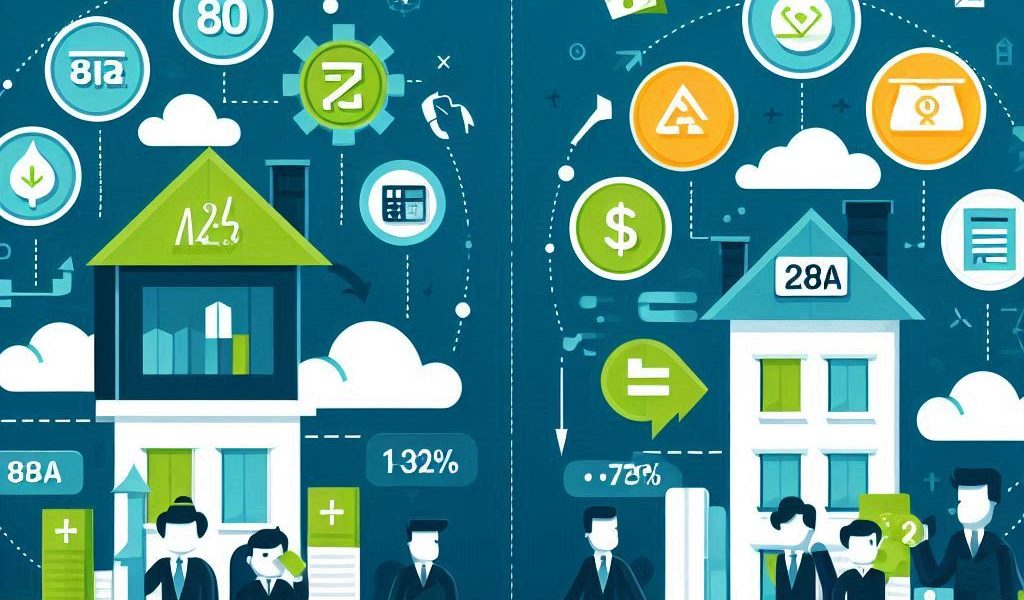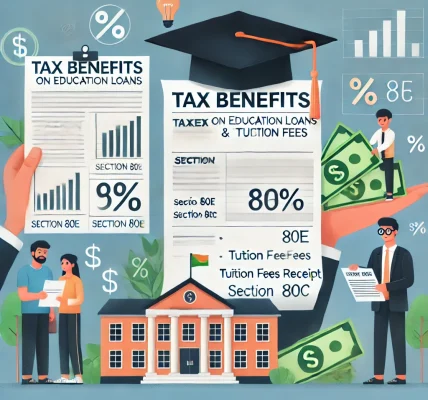Introduction
With the introduction of the new tax regime in India, taxpayers now have an option to choose between the old tax regime and the new tax regime. Both systems come with their own benefits and limitations, making it crucial for individuals to evaluate their financial situation before making a choice.
This guide will help you understand the differences between the two tax regimes, their impact on your tax liability, and how to decide which regime is best suited for you in 2024.
Understanding the Old and New Tax Regimes
Old Tax Regime (With Deductions & Exemptions)
The old tax regime allows individuals to reduce their taxable income through various deductions, exemptions, and rebates under the Income Tax Act. Some common deductions include:
- Section 80C (₹1.5 lakh limit) – Investments in PF, PPF, ELSS, NSC, Life Insurance, etc.
- Section 80D – Health insurance premium deduction.
- House Rent Allowance (HRA) – Available for salaried employees who pay rent.
- Standard Deduction – ₹50,000 for salaried individuals and pensioners.
- Home Loan Interest (Section 24b) – Deduction of up to ₹2 lakh on home loan interest for self-occupied properties.
New Tax Regime (Lower Tax Rates, No Deductions)
The new tax regime offers lower tax rates but eliminates most exemptions and deductions. Here are the tax slabs for FY 2023-24 (AY 2024-25) under the new regime:
| Income Slab (₹) | Tax Rate |
|---|---|
| 0 – 3,00,000 | 0% |
| 3,00,001 – 6,00,000 | 5% |
| 6,00,001 – 9,00,000 | 10% |
| 9,00,001 – 12,00,000 | 15% |
| 12,00,001 – 15,00,000 | 20% |
| Above 15,00,000 | 30% |
Key features of the new regime:
- Higher basic exemption limit (₹3 lakh instead of ₹2.5 lakh in old regime).
- No deductions under Sections 80C, 80D, HRA, LTA, etc.
- Standard deduction of ₹50,000 introduced from Budget 2023.
- Default regime from FY 2023-24 (but taxpayers can opt for the old regime).
Old vs. New Tax Regime: A Comparative Analysis
1. Tax Slabs and Rates
- The new tax regime has lower tax rates but does not allow deductions.
- The old tax regime has higher tax rates but allows deductions to reduce taxable income.
2. Deductions & Exemptions
- The old regime benefits taxpayers who have investments in PPF, ELSS, NSC, NPS, and health insurance.
- The new regime is simpler with no deductions but offers lower tax rates.
3. Who Benefits from the Old Tax Regime?
You should opt for the old tax regime if:
- You invest heavily in tax-saving schemes like EPF, PPF, NPS, life insurance, etc.
- You pay rent and claim HRA.
- You have a home loan and claim interest deduction under Section 24b.
- Your total deductions exceed ₹2.5-3 lakh, making the old regime more beneficial.
4. Who Benefits from the New Tax Regime?
You should opt for the new tax regime if:
- You do not claim major deductions or exemptions.
- You prefer higher take-home salary instead of investing in tax-saving instruments.
- You are a young professional with no major financial commitments.
- Your total deductions are minimal (less than ₹2.5 lakh).
Tax Calculation Example: Old vs. New Tax Regime
Let’s assume an individual has an annual salary of ₹12 lakh.
Under Old Tax Regime:
| Income Component | Amount (₹) |
| Gross Salary | 12,00,000 |
| Standard Deduction | (-50,000) |
| Section 80C (PPF, ELSS, etc.) | (-1,50,000) |
| Section 80D (Health Insurance) | (-25,000) |
| Home Loan Interest (Sec 24b) | (-2,00,000) |
| Taxable Income | 8,75,000 |
| Tax Payable (After Rebates & Slabs) | ₹75,000 (approx.) |
Under New Tax Regime:
| Income Component | Amount (₹) |
| Gross Salary | 12,00,000 |
| Standard Deduction | (-50,000) |
| Taxable Income | 11,50,000 |
| Tax Payable (Under New Slabs) | ₹90,000 (approx.) |
Verdict:
- If you have higher deductions (above ₹2.5 lakh), the old tax regime is beneficial.
- If you don’t invest much in deductions, the new tax regime results in savings.
Key Factors to Consider While Choosing
1. Your Investment Habits
- If you regularly invest in tax-saving instruments, the old regime may work better.
- If you prefer flexibility over forced savings, the new regime is simpler.
2. Home Loan Borrowers
- If you have a home loan, the old tax regime allows an interest deduction of ₹2 lakh.
- The new tax regime does not offer this benefit.
3. Salaried vs. Self-Employed
- Salaried employees with HRA benefits & deductions should analyze if their tax savings exceed the old regime’s higher rates.
- Self-employed individuals without fixed deductions may prefer the new regime’s lower rates.
4. Annual Income Level
- Lower-income groups (₹5-7 lakh) can benefit from the new regime due to the tax rebate under Section 87A.
- Higher-income earners (₹15 lakh and above) should compare tax savings under both regimes before deciding.
Conclusion: Which Tax Regime Should You Choose in 2024?
- The old tax regime is beneficial for taxpayers who claim high deductions through 80C, 80D, HRA, and home loan interest.
- The new tax regime suits those who prefer lower tax rates without the hassle of managing deductions.
- If your total deductions exceed ₹2.5 lakh, the old regime is better.
- If you don’t invest much in tax-saving schemes, the new regime helps lower taxes.




